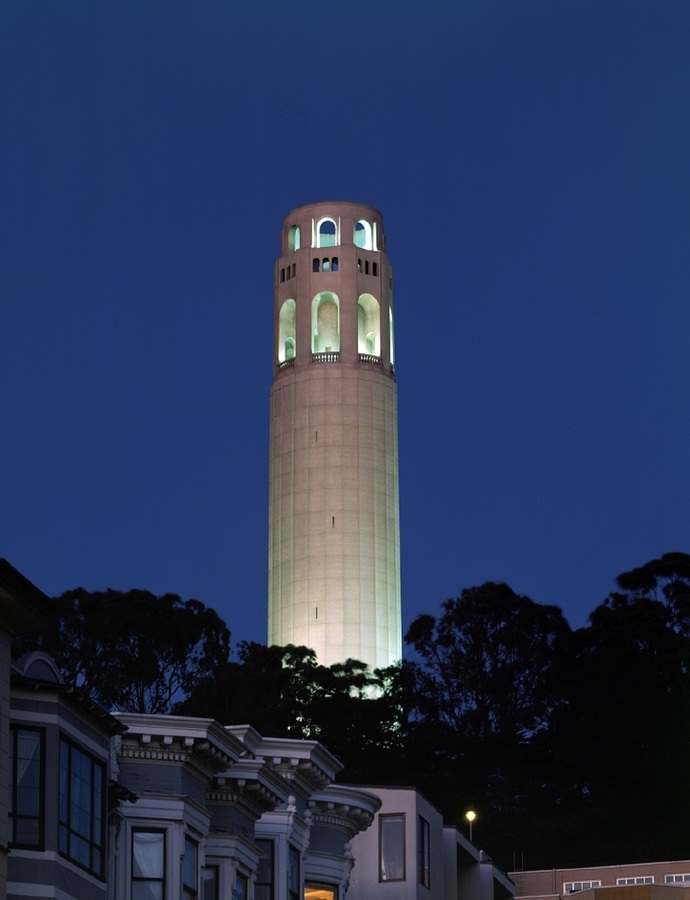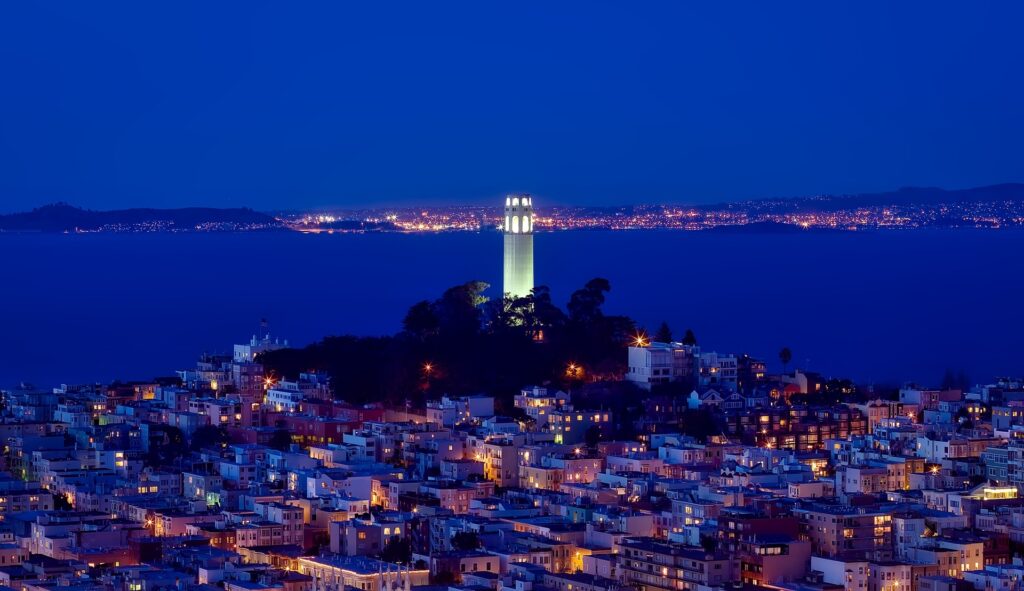CALL US! 1-415-851-9190
LetsGo@Lucky-Tuk-Tuk.com
Towering 210 feet (64 meters) above San Francisco atop picturesque Telegraph Hill, Coit Tower is a beacon of history, art, and breathtaking views. Whether you’re admiring its striking silhouette from afar or taking in the sweeping 360-degree panoramas from its observation deck, this landmark is a must-visit for anyone on a private tour of San Francisco.
Built between 1932 and 1933, Coit Tower was funded by Lillie Hitchcock Coit, a passionate supporter of San Francisco’s volunteer firefighters. She left a generous portion of her fortune to beautify the city, resulting in the tower’s construction and a firefighter memorial in North Beach’s Washington Square. Despite resembling a fire hose nozzle, the tower’s design was purely coincidental, adding to its intrigue.
One of San Francisco’s most scenic neighborhoods, Telegraph Hill was named for the semaphore telegraph system erected in 1849, which signaled incoming ships to the city’s bustling port. As the city grew, the hill transitioned from a maritime hub to a residential retreat known for its winding staircases, lush gardens, and artistic residents in the early 20th century.

Depression-Era Murals: The tower’s interior showcases murals by 26 artists from the 1930s, funded by the Public Works of Art Project. These vivid frescoes depict scenes of daily life, labor struggles, and social themes of the era.
Political Controversy: In the mid-20th century, a section of the murals featuring a hammer and sickle was temporarily removed due to political tensions.
Wild Parrots of Telegraph Hill: The area is home to a famous flock of cherry-headed conures, featured in books and documentaries.
A Hollywood Star: Coit Tower has made cameo appearances in various films and television series, reinforcing its status as a San Francisco icon.

A visit to Coit Tower offers more than just city views. Here are the must-see highlights:
Art and history lovers will be captivated by the detailed murals inside the tower. These vibrant works provide a unique glimpse into 1930s California, depicting agriculture, industry, and urban life in bold, striking colors.
For a small fee, take the elevator to the top and experience one of the best panoramic views in San Francisco. Gaze out over the Golden Gate Bridge, Alcatraz, Angel Island, the Bay Bridge, and the downtown skyline.
Skip the road and climb the scenic staircases leading up to Coit Tower, where you’ll pass charming cottages, colorful gardens, and the famous wild parrots.
A private tour of San Francisco is the best way to experience Coit Tower and Telegraph Hill, offering:
Exclusive stops at breathtaking vantage points.
Personalized itineraries to explore at your own pace.
A knowledgeable guide to share insider history and fun facts.
Pro Tip: Arrive early or late in the day for smaller crowds and the best lighting for photos.
Location: 1 Telegraph Hill Blvd, San Francisco, CA 94133
Hours: Open daily; check the official website for current hours and admission fees.
Website: Visit Coit Tower

Want to explore San Francisco’s iconic landmarks up close? A Lucky Tuk Tuk Private Small Group Tour is the perfect way to see Coit Tower, Telegraph Hill, and beyond—all while enjoying a fun, open-air ride with a local guide. Book your private San Francisco tour today and uncover the city’s hidden gems!
Our goal is to provide 5-star service to our guests from around the world.
Got a question? Don’t hesitate to contact us. We’re passionate about planning the perfect Tuk Tuk tour for you.
